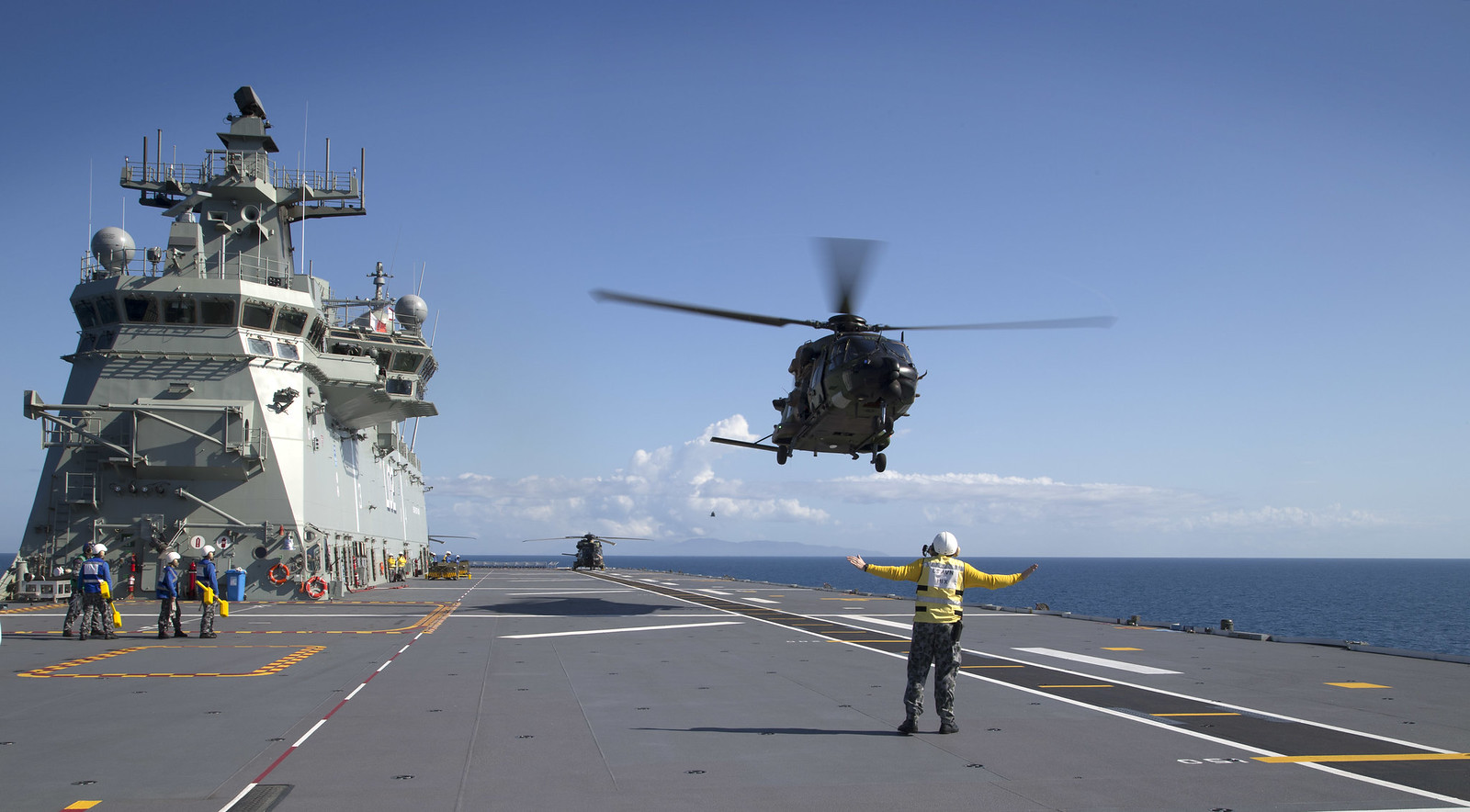You are using an out of date browser. It may not display this or other websites correctly.
You should upgrade or use an alternative browser.
You should upgrade or use an alternative browser.
Aircraft Carriers III
- Thread starter Jeff Head
- Start date
Yes, LD was on the George K. McKenzie on her maiden shake down cruise, but the USS Drew owned his heart all these years, and he enjoyed many reunions with ship-mates from the Drew, I believe one was even held in Iowa? LD appreciates your prayers, thank Popeye.AFB..I just prayed for the Old Salt "LD"..Amen!
Bernard
Junior Member
UK Commits To 2 Carriers, Fully Crewed; F-35B Numbers TBD By on September 04, 2015 at 1:30 PM
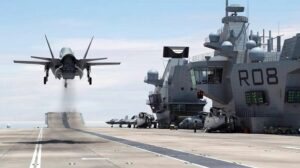
A computer-generated image of a Royal Navy F-35B taking off vertically from the new carrier HMS Queen Elizabeth.
WASHINGTON: The is committed to centered on two aircraft carriers, a senior Ministry of Defense official made clear yesterday. Just as important, the UK is committed to funding adequate crews to sail them — something that had been in doubt after much discussion about cutting costs by effectively the second carrier, HMS Prince of Wales, once it was built.
And Britain will not change its mind again. These are non-negotiable commitments not subject to revision by the ongoing Strategic Defense & Security Review (SDSR), Minister of State for Armed Forces, , told reporters late yesterday. What’s still up in the air in the review, however, is how many the Royal Navy will buy for the two carriers, Prince of Wales and .

Penny Mordaunt
“The decision to have two carriers was taken prior to the SDSR, and for my money, that was absolutely the right decision,” Mordaunt said. “We have made certain assumptions going into the SDSR about…some of the things that we think are fundamental and we have already committed to.”
“Manning them is very much already factored in to the Navy’s manning plan,” Mordaunt went on. Finally, there’s “investment that’s going in, actually not a stone’s throw away from my own constituency [], to enable…general maintenance to be done much more quickly.” To save costs, the Queen Elizabeth class has a fewer sailors for its size than older ships, she said, but it requires “additional shore support” to compensate.
Carriers are inherently maintenance-hungry, which is why Britain is building two in the first place: to ensure at least one is always ready to deploy, even if the other is in overhaul. “There’s no point in having a capability that you can’t rely on,” Mordaunt said, “and you need at least two carriers to be able to guarantee that you can use [one] when you need them.”
Of course, aircraft carriers aren’t much use without aircraft, either. Each QE-class ship can accommodate 40 aircraft of various types, but not all of those are going to be fighters. (Indeed, the British are planning to operate Queen Elizabeth with until its first F-35s are delivered). The maximum capacity for F-35s is reportedly , but during routine operations, each carrier might have only on board.
Will each carrier eventually get a full complement of F-35s? “Any sort of further commitments on details… whether it’s numbers of aircraft or numbers of frigates or what have you, that will be coming out of the SDSR process,” Mordaunt said. “But what I would say [is that in the SDSR] there will also be a lot of radical thinking about the kinds of things we will be operating… .from the carriers,” not just F-35s but “other air assets, whether they’re or unmanned..”
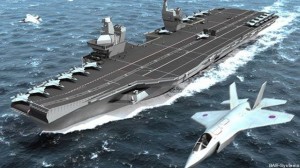
One of the savviest aerospace industry analysts around guesstimated the British would end up with 30 F-35Bs per carrier — eventually. “60 Bs, that would probably do the job,” Richard Aboulafia told me.
“The original buy of 138 F-35s [for the Royal Navy and RAF combined] looks unlikely,” Aboulafia said. “If we’re looking at acquisitions through 2030, with some F-35s acquired to replace earlier Eurofighters, we’ll likely see at least 100 UK F-35s”: 60 Bs for the Royal Navy and 40 As for the Royal Air Force.
(The is a conventional land-based aircraft that requires a runway, while the is a “jump jet” like the famous Harrier, with the ability to take off and land vertically on a much smaller deck. At one point the British planned to buy the conventional carrier-launched variant, the , but the requisite upgrades to the flight deck were ).
, Mordaunt made clear in her remarks yesterday to the that the fleet was a top priority.
“We are a maritime nation,” she said. “, in a few days we will be in deep trouble. 90 percent of everything that we use as fuel, as goods, is brought to the UK by sea. So this is an absolute priority for us.”
What’s more, , accepting a smaller fleet as the price of more capable vessels that can keep pace with the US Navy. “These are the most sophisticated warships in the world,” Mordaunt boasted at the Atlantic Council. They also “are probably the most expensive warships in the world,” she acknowledged, somewhat ruefully.
“You can buy a frigate for half the price that the are going to cost us,” Mordaunt said, but it wouldn’t have half the capability. Likewise, the is much more expensive and powerful than alternative designs, she said: “We have chosen to buy billion-pound warships because it makes us .”

A computer-generated image of a Royal Navy F-35B taking off vertically from the new carrier HMS Queen Elizabeth.
WASHINGTON: The is committed to centered on two aircraft carriers, a senior Ministry of Defense official made clear yesterday. Just as important, the UK is committed to funding adequate crews to sail them — something that had been in doubt after much discussion about cutting costs by effectively the second carrier, HMS Prince of Wales, once it was built.
And Britain will not change its mind again. These are non-negotiable commitments not subject to revision by the ongoing Strategic Defense & Security Review (SDSR), Minister of State for Armed Forces, , told reporters late yesterday. What’s still up in the air in the review, however, is how many the Royal Navy will buy for the two carriers, Prince of Wales and .

Penny Mordaunt
“The decision to have two carriers was taken prior to the SDSR, and for my money, that was absolutely the right decision,” Mordaunt said. “We have made certain assumptions going into the SDSR about…some of the things that we think are fundamental and we have already committed to.”
“Manning them is very much already factored in to the Navy’s manning plan,” Mordaunt went on. Finally, there’s “investment that’s going in, actually not a stone’s throw away from my own constituency [], to enable…general maintenance to be done much more quickly.” To save costs, the Queen Elizabeth class has a fewer sailors for its size than older ships, she said, but it requires “additional shore support” to compensate.
Carriers are inherently maintenance-hungry, which is why Britain is building two in the first place: to ensure at least one is always ready to deploy, even if the other is in overhaul. “There’s no point in having a capability that you can’t rely on,” Mordaunt said, “and you need at least two carriers to be able to guarantee that you can use [one] when you need them.”
Of course, aircraft carriers aren’t much use without aircraft, either. Each QE-class ship can accommodate 40 aircraft of various types, but not all of those are going to be fighters. (Indeed, the British are planning to operate Queen Elizabeth with until its first F-35s are delivered). The maximum capacity for F-35s is reportedly , but during routine operations, each carrier might have only on board.
Will each carrier eventually get a full complement of F-35s? “Any sort of further commitments on details… whether it’s numbers of aircraft or numbers of frigates or what have you, that will be coming out of the SDSR process,” Mordaunt said. “But what I would say [is that in the SDSR] there will also be a lot of radical thinking about the kinds of things we will be operating… .from the carriers,” not just F-35s but “other air assets, whether they’re or unmanned..”

One of the savviest aerospace industry analysts around guesstimated the British would end up with 30 F-35Bs per carrier — eventually. “60 Bs, that would probably do the job,” Richard Aboulafia told me.
“The original buy of 138 F-35s [for the Royal Navy and RAF combined] looks unlikely,” Aboulafia said. “If we’re looking at acquisitions through 2030, with some F-35s acquired to replace earlier Eurofighters, we’ll likely see at least 100 UK F-35s”: 60 Bs for the Royal Navy and 40 As for the Royal Air Force.
(The is a conventional land-based aircraft that requires a runway, while the is a “jump jet” like the famous Harrier, with the ability to take off and land vertically on a much smaller deck. At one point the British planned to buy the conventional carrier-launched variant, the , but the requisite upgrades to the flight deck were ).
, Mordaunt made clear in her remarks yesterday to the that the fleet was a top priority.
“We are a maritime nation,” she said. “, in a few days we will be in deep trouble. 90 percent of everything that we use as fuel, as goods, is brought to the UK by sea. So this is an absolute priority for us.”
What’s more, , accepting a smaller fleet as the price of more capable vessels that can keep pace with the US Navy. “These are the most sophisticated warships in the world,” Mordaunt boasted at the Atlantic Council. They also “are probably the most expensive warships in the world,” she acknowledged, somewhat ruefully.
“You can buy a frigate for half the price that the are going to cost us,” Mordaunt said, but it wouldn’t have half the capability. Likewise, the is much more expensive and powerful than alternative designs, she said: “We have chosen to buy billion-pound warships because it makes us .”
Thanks for the info...I have prayed for him...and do so right with more detail, even though the Man on High already knows.He enlisted when he was 17, his Mom had to go down with him to enlist.
Hes my Father in Law, served on USS Drew, and attended nearly every ship reunion till they ran out of crew, he's 88, participated in the beach landing on Okinawa and several other islands, later served on the shake-down cruise of a Destroyer that served up to and through Vietnam, but the Drew was his first ship! his name is LD Scott
Jura The idiot
General
found at NavyTimes:
Lawmaker says block buying carriers would save money
Lawmaker says block buying carriers would save money
The future carrier John F. Kennedy's keel was barely laid before it found itself in its first battle. The second-in-class supercarrier is slated to cost just under $12 billion. The Navy wants to build one of these every five years, but an influential lawmaker wants the service to arrange a block-buy that saves money per ship and may allow the service to purchase more ships.
Rep. Randy Forbes, R-Va., used the keel-laying ceremony in August to call for more ships than the 308 currently sought by the Navy. He is pushing for 346 ships, and promised to rally other lawmakers, but said service leaders have to take the first step.
“We need the Navy to come in and do a realistic assessment of what they need,” said Forbes, a member of the House Armed Services Committee who leads a subcommittee that oversees the Navy and Marine Corps.
The Navy’s 2013 Force Structure Assessment calls for a 306-ship fleet that includes 11 aircraft carriers, 88 surface combatants, 48 attack submarines, 12 ballistic missile submarines, 34 amphibs and 29 auxiliary ships. The Navy is on track to hit the 300-ship mark by the end of the decade.
“If we had a larger-than-308-ship Navy, would that be a benefit in terms of doing our missions? Certainly,” said Sean Stackley, assistant Navy secretary for research, development, and acquisition. "But the issue as always is going to be balancing the size of the fleet and the affordability of the fleet."
On whether a 308-ship fleet is too low, Stackley said, “I am not the requirements guy.” He added: “We hope that the debate will continue [to ensure] whatever is determined to be the size of our Navy, that it is backed by the necessary resources to get there.”
That is the catch. While more ships would, for many, mean shorter deployments on newer vessels — almost a luxury cruise for sailors who have pulled 10 months on aging war machines — no one seems to agree on how to pay for those ships. If the costs are too high, or too many added costs get tacked on, the program will get cancelled. A proven way to cut cost is not getting a thumbs-up from Congress.
Some advocates seek a return to the Reagan-era ship building model. In this scenario, Congress would put a large amount of cash up front to buy material in bulk, and thus at a better price (the common analogy is unit cost at a warehouse store such as Costco). The savings from this “block buy” would then be used to fund extra ships.
Though it is a common strategy for multiple aircraft programs, materials for carriers have not been bought in this manner since the 1980s, when it was done with much success, said Bryan Clark, a senior fellow at the Center for Strategic and Budgetary Assessments who previously served as special assistant to the chief of naval operations. Instead of covering the carrier's $12 billion price tag over five years (as is done today), Congress consolidated much of the budget and essentially paid for each carrier in two years. That consumed a large chunk of the shipbuilding budget, which meant a reduction in the purchase of other ships. But the Navy would buy large numbers of ships or submarines in subsequent years to balance things out. It still took years to build the ships, but paying for them up front gave shipyards more buying power.
That was then. Making such a sell is quite different today.
“Would there be savings? Absolutely,” Stackley said. But block buy “is a difficult business case.” That’s because some lawmakers don’t like to commit a future Congress to continuing to fund something a previous Congress had started, as is the nature of the multiyear procurement, Stackley said. It's also viewed as impractical for carrier construction. These hulking ships take years to build and typically feature design updates between hulls to accommodate new systems that render some of block-buying moot.
The Senate and House armed service committees would likely support a block buy, as would the Senate Appropriations Committee, Clark said. The House Appropriations Committee has traditionally not been a fan. In addition, some Pentagon leaders have been wary of big investments for weaponry when needs are ever-changing. They would rather go slow and steady than endure cost overruns and questionable procurements, especially after the beating every service has taken in this category over the past decade. But that pace will likely mean fewer ships at higher costs.
Simply put, a larger Navy will demand a different acquisition strategy.
“We've got to bring back more predictability into what we are doing,” said Forbes, who chairs the HASC Seapower subcommittee. “You can't have the best purchase power if you are constantly up and down, starting and stopping. Acquiring material in bulk, in advance gives us a great opportunity to keep those costs down and keep the number of ships up.”
asif iqbal
Lieutenant General
Increasing the numbers is one thing but where is the increase proposed?
Only increase I can see is a increase in amphibious assault ships, USN has proposed a 50 ship force to full fill missions without bottle neck
The 34 ships would have to be increased in the following way
11 x LHA
11 x LPD
11 x LX(R)
To
16 x LHA
16 x LPD
16 x LX(R)
That's 48 as apposed to 33
Then they would add more DDGs
Only increase I can see is a increase in amphibious assault ships, USN has proposed a 50 ship force to full fill missions without bottle neck
The 34 ships would have to be increased in the following way
11 x LHA
11 x LPD
11 x LX(R)
To
16 x LHA
16 x LPD
16 x LX(R)
That's 48 as apposed to 33
Then they would add more DDGs
Jura The idiot
General
Increasing the numbers is one thing but where is the increase proposed?
...
"A bipartisan defense panel estimated that it will take 346 ships to execute our national security strategy; however, testimony from the Congressional Budget Office indicated that the Navy will end up with a fleet of only approximately 230 ships, should sequestration continue."
according to
Well, in fact ships number as also displacement tonnage for a fleet is not realy reliable, only administrative, political Financial/budget matter mainly. And in more include not true warships/sub's.
If you look for displacement Russian Navy is second mainly because have big nuclear submarines also big CG/CGN and China after 3rd ! look the reality guys what % of Rusian ships are really operational or only available ... 50 max.
Don' t forget Sailors quality also.
Forbes very reputable for money especially his famous ranking of billionaires but i see less for military capability...
USN have 10 CVN, 84 MSC, 7 SSC, 14 SSBN, 57 SSN/SSGN, 32 Combat support ships, 31 AA and 13 MS. In more 900 fighters and 150 MPA and...
No match with any other
If you look for displacement Russian Navy is second mainly because have big nuclear submarines also big CG/CGN and China after 3rd ! look the reality guys what % of Rusian ships are really operational or only available ... 50 max.
Don' t forget Sailors quality also.
Forbes very reputable for money especially his famous ranking of billionaires but i see less for military capability...
USN have 10 CVN, 84 MSC, 7 SSC, 14 SSBN, 57 SSN/SSGN, 32 Combat support ships, 31 AA and 13 MS. In more 900 fighters and 150 MPA and...
No match with any other
Last edited:
SouthernSky
Junior Member
A few pics for Popeye.
Four MRH 90 helicopters from the 5th Aviation Regiment join HMAS Canberra off the northern coast of Queensland for Exercise Sea Series 2015.
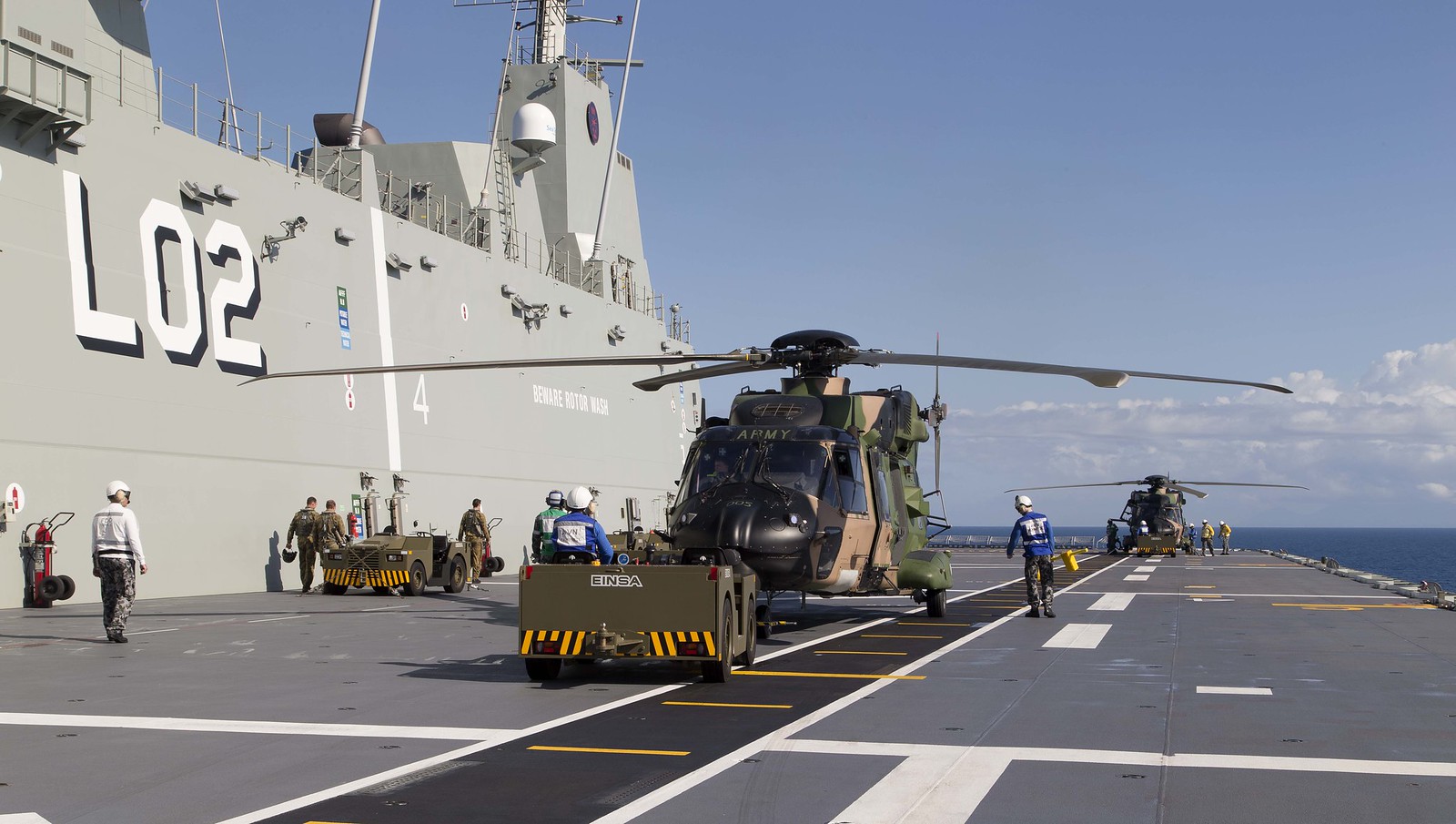



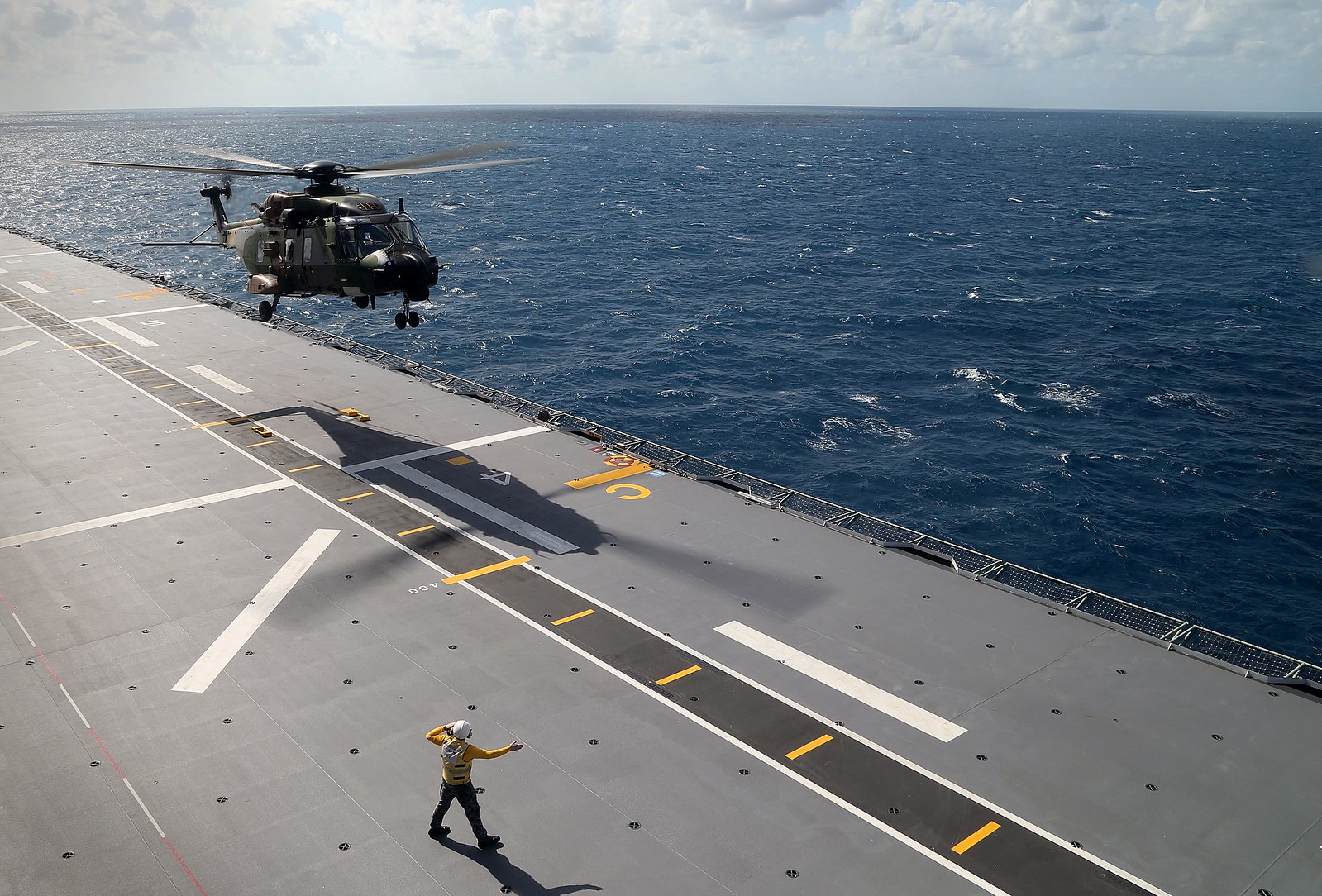
Four MRH 90 helicopters from the 5th Aviation Regiment join HMAS Canberra off the northern coast of Queensland for Exercise Sea Series 2015.





SouthernSky
Junior Member
And one more.
